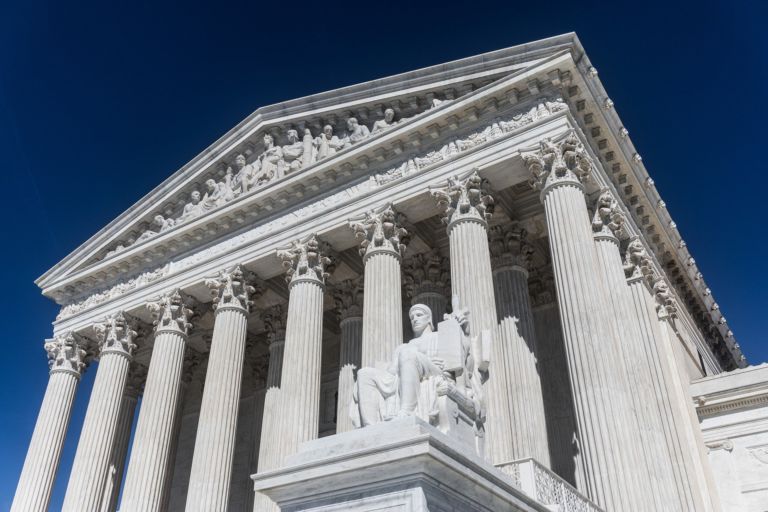Clyde Wayne Crews Jr. has updated his annual “Ten Thousand Commandments” report on the federal regulatory state. Regulations are executive agency rules, created by unelected bureaucrats, that carry the force of law without having been deliberated over and voted into law by elected members of Congress (i.e., the legislative branch).
They are persistent and, especially when the regulatory process is abused, can be pernicious. Either way, they impose significant roadblocks to economic growth. Crews’ work shows just how burdensome federal regulations have gotten and how big the problem of federal overregulation has become. Here are a few takeaways:

- Federal regulation costs the U.S. economy $1.963 trillion annually, with $1.9 trillion from regulatory compliance and economic impacts of federal intervention and the remaining $63 billion spent by federal agencies to administer the regulatory state
- If these costs were economic output, they’d rank as the world’s 7th largest economy
- The unseen costs of federal regulation are essentially a “hidden tax” on U.S. households of $14,809 apiece annually
As Crews wrote, President Trump’s focus on deregulation is certainly “needed given the growing costs of federal regulation.” Since Trump’s election, I’ve written about the importance of the president’s efforts to pare down the regulatory state:
- Getting rid of the Environmental Protection Agency’s “Clean Power Plan,” which would have imposed an additional $366 billion in regulatory costs (and double-digit electricity rate increases, power plant shutdowns, and rolling blackouts) all to stave off 018 degrees Celsius in global temperatures by 2100
- Requiring agencies to give up a set number of old rules (in this case, two) for any new rule they propose, a red-tape reduction measure I have long promoted in North Carolina
- Signing Congressional Review Act repeals of Obama-era overregulation when Congress has acted — the most extensive use of the CRA yet, estimated to cut regulatory costs by $36.2 billion annually
I’ve also pointed out that, certain ubiquitous histrionics notwithstanding, how rare it is for a chief executive voluntarily to shed his office of ill-gotten power — which is the essence of red-tape reduction.
Trump’s budget keeps a focus on cutting red tape. In his budget message to Congress, he lists this as one of the “eight pillars” of his proposal:
Regulatory Rollback. We must eliminate every outdated, unnecessary, or ineffective Federal regulation, and move aggressively to build regulatory frameworks that stimulate—rather than stagnate—job creation. Even for those regulations we must leave in place, we must strike every provision that is counterproductive, ineffective, or outdated.
While presidential budgets may be essentially political documents considered “dead on arrival” to Congress, they do signal administrative priorities. Writing in Forbes, Crews discussed the importance of the Trump budget’s recognition that economic growth is linked with eliminating red tape:
While there is much criticism of Trump for assuming that 3% economic growth rate in his fiscal 2018 budget, regulations do have macroeconomic effects. Trump’s budget in part recognizes that by incorporating anticipated savings from regulatory rollbacks, reforms, and anticipated codification of executive orders (p. 14-15) into the budgetary bottom line, and implicitly, in the pursuit of federal budgetary surplus.
Even if certain particulars of Trump’s budget are DOA, the recognition that cutting red tape and regulation to secure a more prolific and healthier economy will improve the fiscal bottom line is extremely important.
For example, along with a rollback of Environmental Protection Agency (both its size and its rules) and the inclusion of Obamacare repeal savings, the budget notes a number of bipartisan pro-liberalization reform proposals in areas like air traffic control and highway tolling, as well as a sweeping regulatory oversight agenda fueled by executive orders.
A note about state regulation
This post has been focused on the costs of federal regulation. States and local governments impose costly regulations, too, whose costs add to the total regulatory burden.
A 2015 study by economists at Beacon Hill Institute at Suffolk University looked into the burden imposed by state regulations in North Carolina on the private sector. They estimated that North Carolina’s regulatory burden was up to $25.5 billion in 2015 alone.
Such enormous costs are why red-tape reduction efforts in Washington and Raleigh are so vital.


